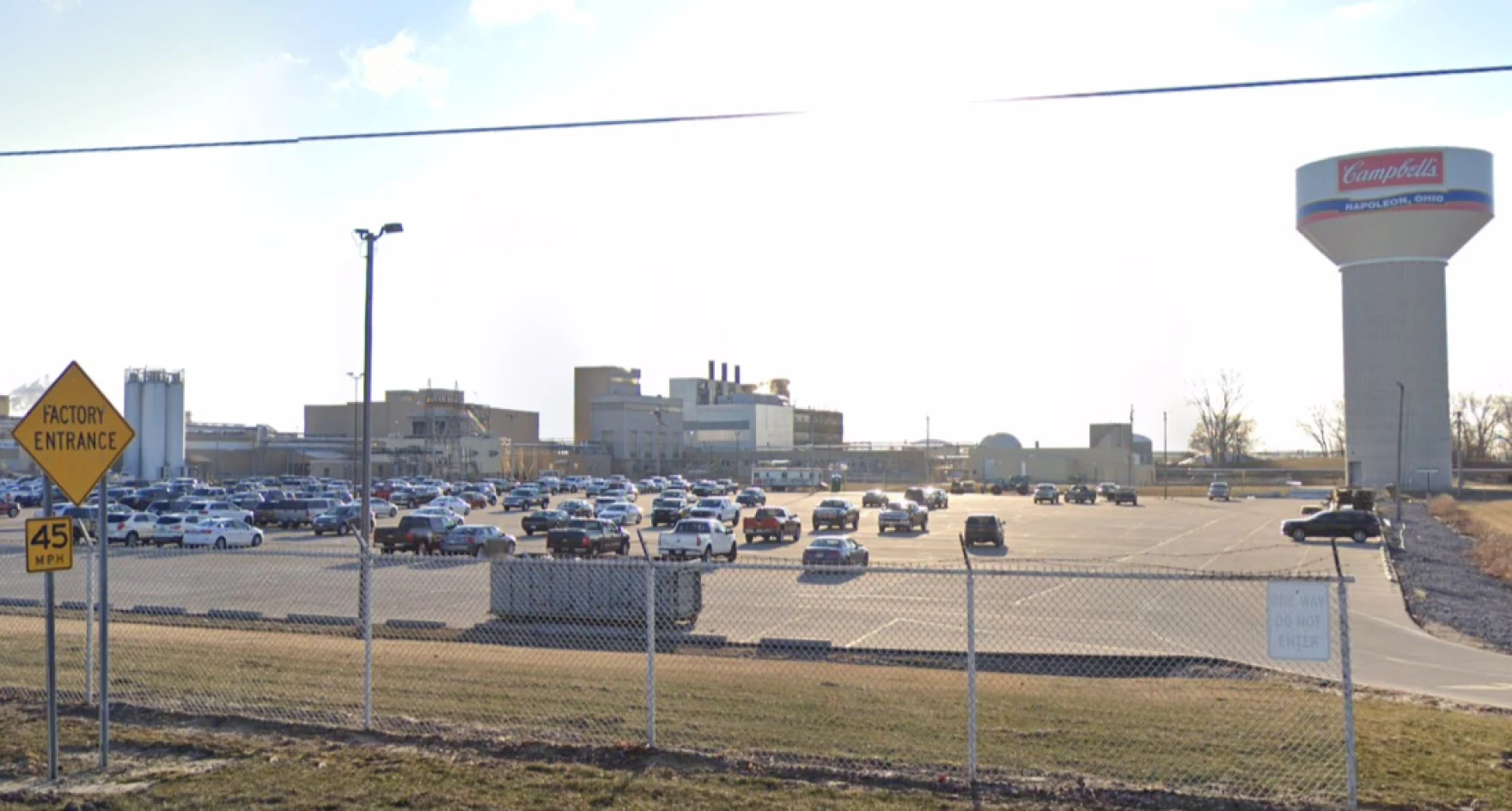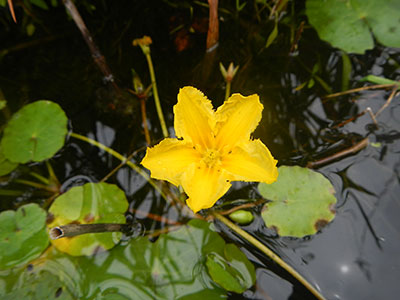
By Zaria Johnson, Ideastream Public Media
This story was originally published by Ideastream.
A recent lawsuit suit accusing Campbell Soup of discharging excessive amounts of phosphorus and other contaminants into Northwest Ohio waterways is highlighting challenges the state faces in targeting harmful algal blooms in Lake Erie.
At the center of the civil lawsuit, brought by Lake Erie Waterkeeper and Environment Ohio are violations of Campbell’s pollution limits over the last five years with high levels of contaminants like E. coli, phosphorus, oil and grease entering the water bodies.
“In our research, together with Lake Erie Waterkeeper, we found that the Campbell’s plant was one of the largest industrial point sources of phosphorus flowing into the Maumee River and its tributaries,” said John Rumpler, director of Environment Ohio Clean Water. “We found out that the pollution coming from the plant is actually in excess of what it is allowed to put into our waterways.”
Read the complaint
National Pollutant Discharge Elimination System permits define a total maximum daily load that outlines how much of a pollutant can enter the environment from a point source without disrupting the ecosystem, said Josh Kratka, a senior attorney for the National Environmental Law Center.
The amount of phosphorus the Campbell facility discharges into the Maumee River regularly exceeds the amount allotted by its permit, the suit alleges.
E. coli discharges at the Campbell wastewater plant exceeded its NPDES permit limits on a total of 551 days between 2018 and 2023, according to the lawsuit. Phosphorus discharges were in violation of permit limits for a total of 998 days.
It’s not just Campbell
While it’s important to hold polluters like Campbell responsible, Sandy Bihn with Lake Erie Waterkeeper said other major contributors to phosphorus runoff and algal blooms may be flying under the state’s radar.
“We’ve had massive, massive gross growth of the livestock manure in the Maumee watershed over the years,” Bihn said.
If producers of livestock were required to report contaminants from manure in the same way Campbell does, Bihn said she would expect the results to be “quite alarming.”
“But there’s no reports like that,” she said.
What’s being done?
The state is taking steps to improve the amount of pollution that comes from farming.
The H2Ohio Initiative is a multi-agency, voluntary program that aims to reduce phosphorus before and after it enters the water through recommended best practices and nutrient management plansfor participating farms, the Ohio EPA wrote in a statement.
“Individualized nutrient management plans are developed for participating farms to identify which H2Ohio best practices will reduce the most phosphorus runoff at each location,” Anthony Chenault, a media coordinator for the Ohio EPA, wrote in a statement. “The program also focuses on creating, restoring and enhancing wetlands, which can reduce phosphorus runoff by absorbing pollutants, slowing down the movement of water, offering a natural filtering process, and preventing the further movement of contaminated matter.”
Through the lawsuit, the advocacy organizations hope to reduce phosphorus overall and limit the amount of toxic algal blooms in Lake Erie that threaten wildlife and human health, Rumpler said.
“The key variable for that toxic stew is how much phosphorus pollution is flowing into western Lake Erie,” he said. “We’ve been looking at all of the various sources of phosphorus pollution, including corporate agriculture, by the way, and other sources.”
Algal blooms are created by excessive amounts of phosphorus that enter waterways, and they can produce toxins like microcystin, a known liver toxin, which decreases water quality and presents danger to humans and animals, according to the U.S. EPA. In 2014, half-a-million Toledo residents were left without waterto drink and cook with due to toxins from algal blooms in Lake Erie.
Getting Campbell into compliance is the current goal, Rumpler said, but environmental advocates have also set their sights on other major contributors including the meat packaging and agricultural industries.
The team, represented by the National Environmental Law Center, decided to file its citizen lawsuit when Campbell failed to make changes, and state and federal agencies had not yet gotten involved, Rumpler said.
“This is why Congress in 1972 included a citizen suit provision in the Clean Water Act,” he said, “because far too often, state agencies either lacked the capacity or the political will to go after polluters that are dumping into our waterways.”
Campbell Soup has been working with the U.S. Department of Justice, the U.S. EPA and the National Environmental Law Center since receiving the notice of intent to sue in July to share updates on previous and current actions to comply with discharge permits, Campbell’s Corporate Communications Manager Emma Wright said in an emailed statement.
“We have taken a number of steps to improve our existing wastewater management operations and will continue to take immediate action to address this issue. We have retained independent experts to help implement short-term improvements and have capital investments planned to resolve this issue permanently. We take this matter seriously and will continue to work with regulators and other stakeholders to improve our operations and comply with all environmental regulations.”
Campbell also faces a federal lawsuit
The Department of Justice, which brought a federal lawsuit against Campbell Soup on behalf of the U.S. EPA, declined a request for an interview citing the ongoing litigation.
Read the complaint
The Ohio EPA has not brought its own lawsuit against the facility for the pollution limit violations and declined comment on the litigation. In a statement, Chenault said the state agency shares the role of implementing and enforcing NPDES permits with the federal EPA.
“Ohio EPA’s National Pollutant Discharge Elimination System (NPDES) permits set nutrient limits for all facilities that discharge into the Maumee River, including agricultural facilities,” he wrote in the statement. “Ohio EPA works closely with our federal partners to enforce compliance with permit limits and to hold companies accountable to invest in their facilities and protect Ohio’s water resources.”
If Campbell does not settle, the federal and citizen lawsuits will likely be consolidated into one, said Kratka, the National Environmental Law Center attorney.
The goal, he said, is for Campbell to agree to make changes to its system that fall into compliance with permit limits.
“They need to dramatically upgrade their wastewater treatment system — really from top to bottom — and modernize it and make sure it adequately treats all the waste that they generate,” he said. “We want the company to pay a civil penalty that is sufficient to that should be higher than the amount of money they’ve saved by violating for all these years. In other words, it should exceed the economic benefit of their violations.”
The funds from the civil penalty should be used to support local watershed protection projects, Kratka said.
Catch more news at Great Lakes Now:
Cleveland, Cuyahoga County leaders urge EPA to finalize federal clean car standards
Mandated East Palestine creek cleanup is entering final phase, environmental officials say
Featured image: Campbell Soup is facing federal and civil action lawsuits due to allegedly exceeding pollution limits of contaminants like phosphorus, E. coli, oil and grease into the Maumee River and Lake Erie. (Photo Credit: Zaria Johnson/Google Street View)




